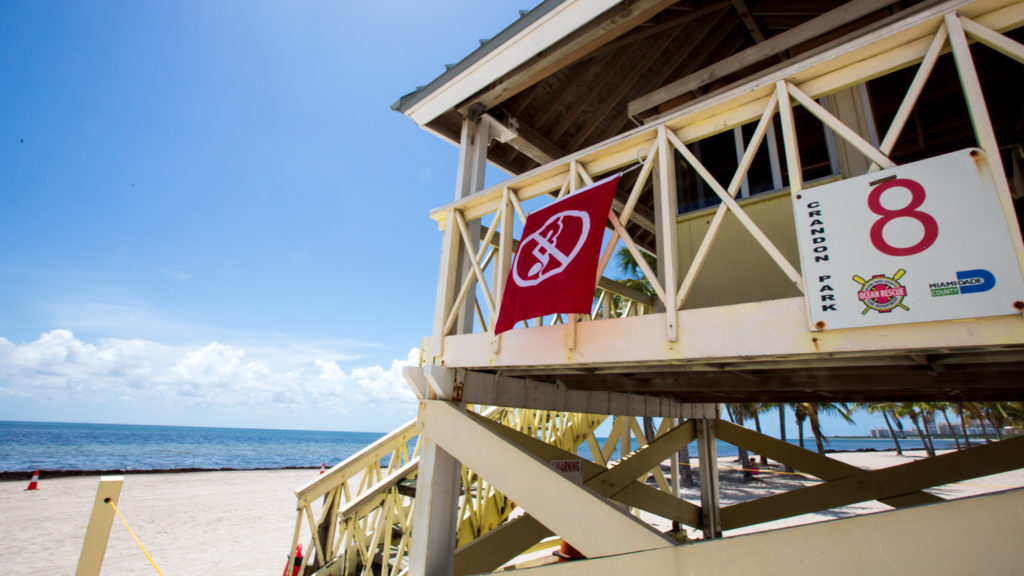Unsafe Water Alert for All Key Biscayne Beaches
Tony WintonSeptember 6, 2019

A no-swimming flag hangs from the side of a lifeguard station overlooking the beach at Crandon Park in Key Biscayne, Fla. because of fecal contamination of the water, Aug. 8. 2019. Crandon beaches have been closed many times this summer by the Florida Health Department. (Key News/Tony Winton)
UPDATE: The Health Department cleared Cape Florida and the Key Biscayne Beach Club Saturday afternoon.
A new alert from the Florida Department of Health is urging beachgoers to stay out of the water at all beaches in Key Biscayne after tests showed high levels of fecal bacteria.
The no-swimming advisory covers Crandon North and South beaches, the Key Biscayne Beach Club, and the beach at Bill Baggs Cape Florida State Park. The department said that although the test at the Beach Club location was just “close to” the safety standard, it decided to issue the warning because it was surrounded by other sites where bacterial levels were excessive.
Dr. Samir Elmir, the head of the department’s environmental unit, said it’s possible that heavy rainfall and runoff from Hurricane Dorian contributed to the problem, although he could not provide scientific confirmation. Researchers have said large rainfalls are associated with increases in bacterial contamination.
Elmir said that tests are being repeated Friday at the Beach Club and Cape Florida, with results expected Saturday – if the tests show the water is safe, the advisory could be lifted then. Tests for the other locations are being taken Saturday so it’s possible warnings will remain in place for Crandon throughout the weekend.
Friday afternoon, officials lifted an advisory for Virginia Key beach, but the warning for all the Key Biscayne beaches remained in effect.
The Crandon beaches were most recently closed for an 11-day stretch back in early August. The bacterial problems at Crandon have caused the popular location to be ranked among the state’s dirtiest, according to the group Environment America. Crandon ranked as the third-dirtiest in the state and the dirtiest in South Florida, with 17 “potentially unsafe” days in 2018.
In addition to unsafe water, researchers have said that bacteria levels have also increased in the sand itself because of huge flows of sargassum seaweed.


